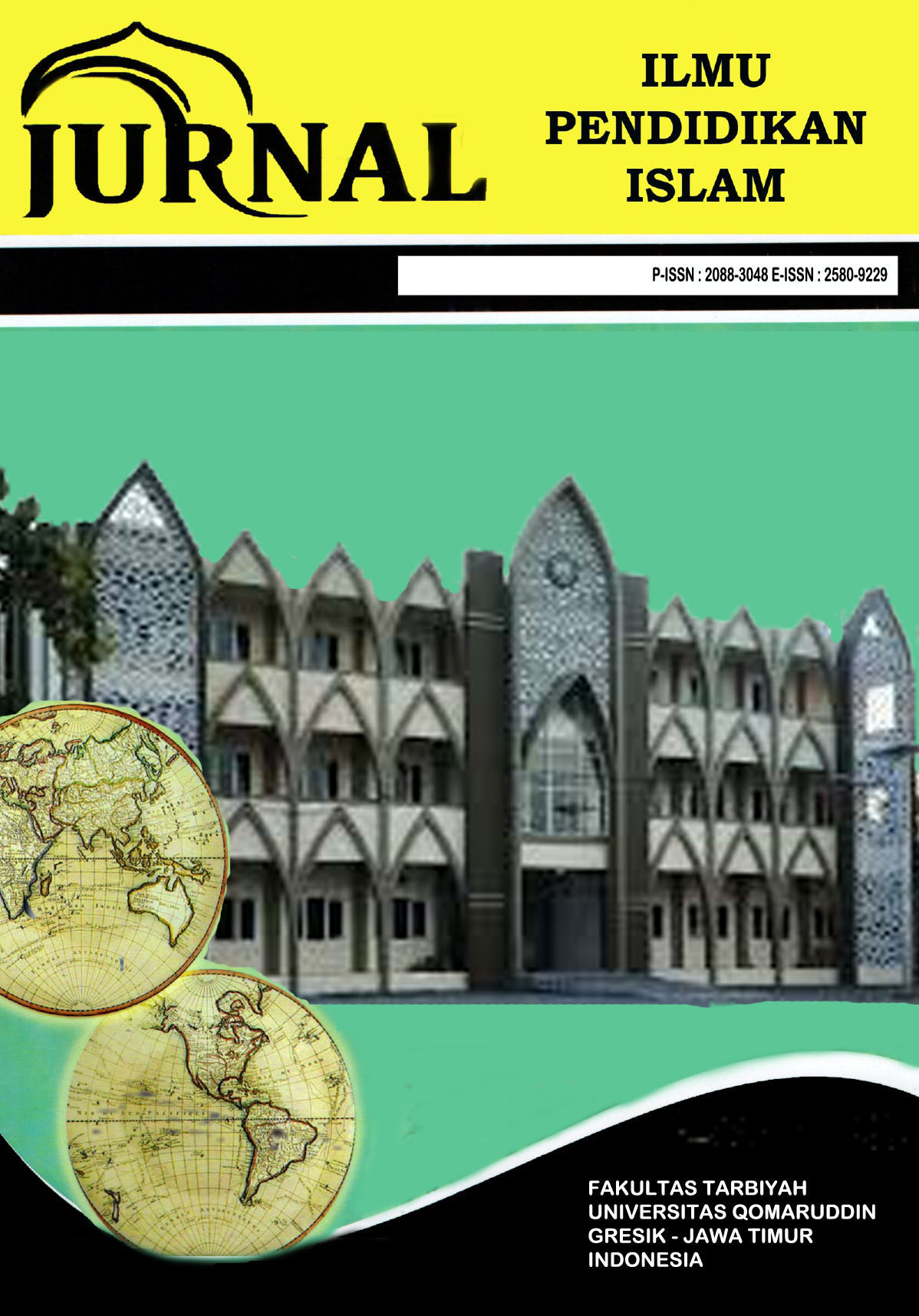METODE BLENDED LEARNING MELALUI PENGGUNAAN WEB ECAMPUS DI STAI RIYADHUL JANNAH SUBANG
Abstract
This study aims to evaluate the implementation of the blended learning method through the use of the eCampus web platform at STAI Riyadhul Jannah Subang. This approach combines face-to-face instruction with online learning to enhance the effectiveness of the teaching and learning process. The research employed a qualitative descriptive method through observation, interviews, and documentation. The findings indicate that the use of the eCampus platform significantly supports flexible access to learning materials, lecturer-student interaction, and the efficient management of assignments and assessments. Although technical challenges such as internet connectivity and digital literacy remain, overall, the eCampus-based blended learning method has proven to increase student engagement and learning motivation. The implications of this research highlight the need for further training and the development of digital infrastructure to sustain hybrid learning in Islamic higher education institutions
References
Anderson, T., & Dron, J. (2011). Three generations of distance education pedagogy. The International Review of Research in Open and Distributed Learning, 12(3), 80–97.
Graham, C. R. (2013). Emerging practice and research in blended learning. In M. G. Moore (Ed.), Handbook of Distance Education (3rd ed.). Routledge.
Garrison, D. R., & Vaughan, N. D. (2008). Blended Learning in Higher Education: Framework, Principles, and Guidelines. San Francisco: Jossey-Bass.
Hrastinski, S. (2019). What Do We Mean by Blended Learning? TechTrends, 63, 564–569.
Allen, I. E., Seaman, J., & Garrett, R. (2007). Blending In: The Extent and Promise of Blended Education in the United States. Sloan Consortium.
Picciano, A. G. (2009). Blending with purpose: The multimodal model. Journal of Asynchronous Learning Networks, 13(1), 7–18.
Bonk, C. J., & Graham, C. R. (2006). The Handbook of Blended Learning: Global Perspectives, Local Designs. San Francisco: Pfeiffer Publishing.
Singh, H. (2003). Building effective blended learning programs. Educational Technology, 43(6), 51–54.
Means, B., Toyama, Y., Murphy, R., Bakia, M., & Jones, K. (2009). Evaluation of Evidence-Based Practices in Online Learning: A Meta-Analysis and Review of Online Learning Studies. U.S. Department of Education.
UNESCO. (2021). Blended Learning for Quality Higher Education: Selected Case Studies on Implementation from Asia-Pacific. UNESCO Publishing.
Lestari, E. R., & Wulandari, Y. (2021). Implementasi Model Blended Learning dalam Pembelajaran Daring pada Masa Pandemi Covid-19. Jurnal Pendidikan dan Pengajaran, 54(2), 87–96.
Kuntarto, E. (2017). Keefektifan Model Pembelajaran Daring sebagai Inovasi Pembelajaran. Indonesian Journal of Educational Technology, 3(2), 146–153.
Ningsih, D. R. (2020). Efektivitas Pembelajaran Blended Learning dalam Meningkatkan Hasil Belajar Mahasiswa. Jurnal Teknologi Pendidikan, 22(3), 234–245.
Arifin, I. (2020). Digitalisasi Pembelajaran di Perguruan Tinggi Keagamaan Islam: Tantangan dan Peluang. Jurnal Pendidikan Islam, 6(1), 45–60.
Suartama, I. K. (2016). Pengembangan E-learning Berbasis Blended Learning. Jurnal Ilmu Pendidikan, 22(1), 25–32.
Sunarti, T., & Nugroho, W. (2020). Pengaruh Pembelajaran Blended Learning terhadap Hasil Belajar Mahasiswa. Jurnal Edukasi Teknologi Pendidikan, 6(2), 101–110.
Pannen, P. (2020). Kebijakan dan Strategi Pembelajaran Daring di Indonesia. Kementerian Pendidikan dan Kebudayaan RI.
Dewi, I. A. P. S. (2019). Penerapan Blended Learning dalam Meningkatkan Kualitas Pembelajaran. Jurnal Pendidikan Indonesia, 8(3), 251–259.
Azhar, K. A. (2020). Transformasi Digital dalam Pendidikan Tinggi Islam. Jurnal Pendidikan Agama Islam, 17(2), 123–134.
Yuliana, S. (2021). Tantangan dan Strategi Implementasi Blended Learning di Perguruan Tinggi. Jurnal Penelitian Pendidikan, 21(1), 45–56.
Thorne, K. (2003). Blended Learning: How to Integrate Online and Traditional Learning. Kogan Page.
Hidayatullah, A. (2020). Penggunaan e-Learning Berbasis Moodle dalam Pembelajaran PAI di PTKI. Jurnal Tarbiyah Islamiyah, 10(1), 67–79.
Arsyad, A. (2017). Media Pembelajaran. Jakarta: RajaGrafindo Persada.
Heinich, R., Molenda, M., Russell, J. D., & Smaldino, S. E. (2005). Instructional Media and Technologies for Learning (8th ed.). New Jersey: Merrill Prentice Hall.
Mahdum, M. (2020). Analisis Efektivitas Pembelajaran Daring Melalui eCampus. Jurnal Inovasi Pendidikan, 4(1), 55–63.
Copyright (c) 2025 Ilyas Rohili, Ahmad Hilman, Irwan Ruswandi, Supiana Supiana, Qiqi Yuliati Zaqiah

This work is licensed under a Creative Commons Attribution 4.0 International License.





